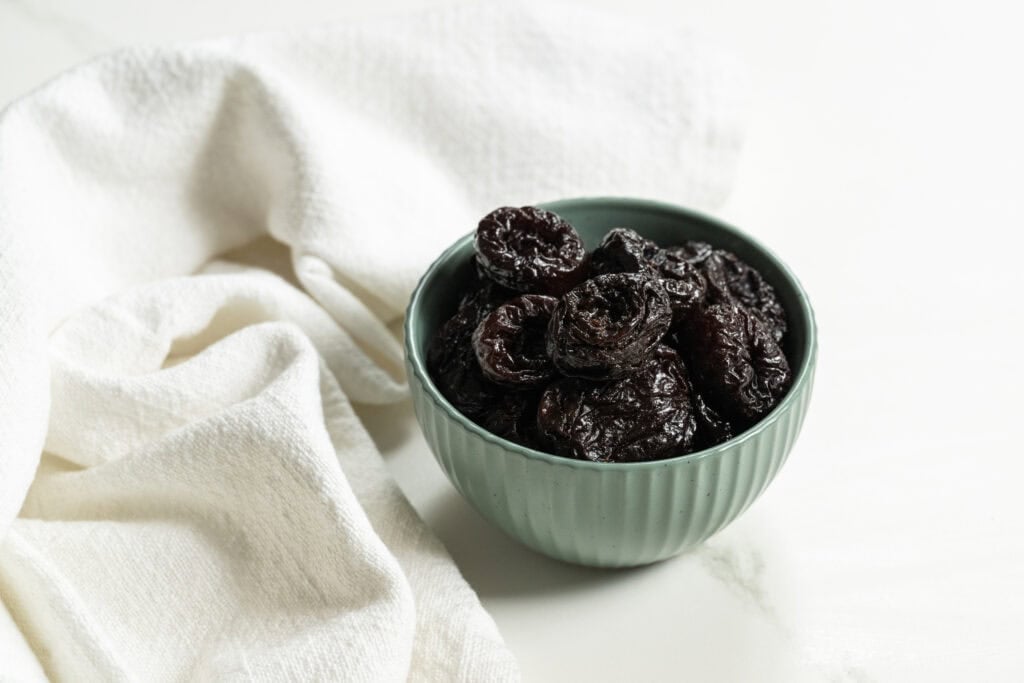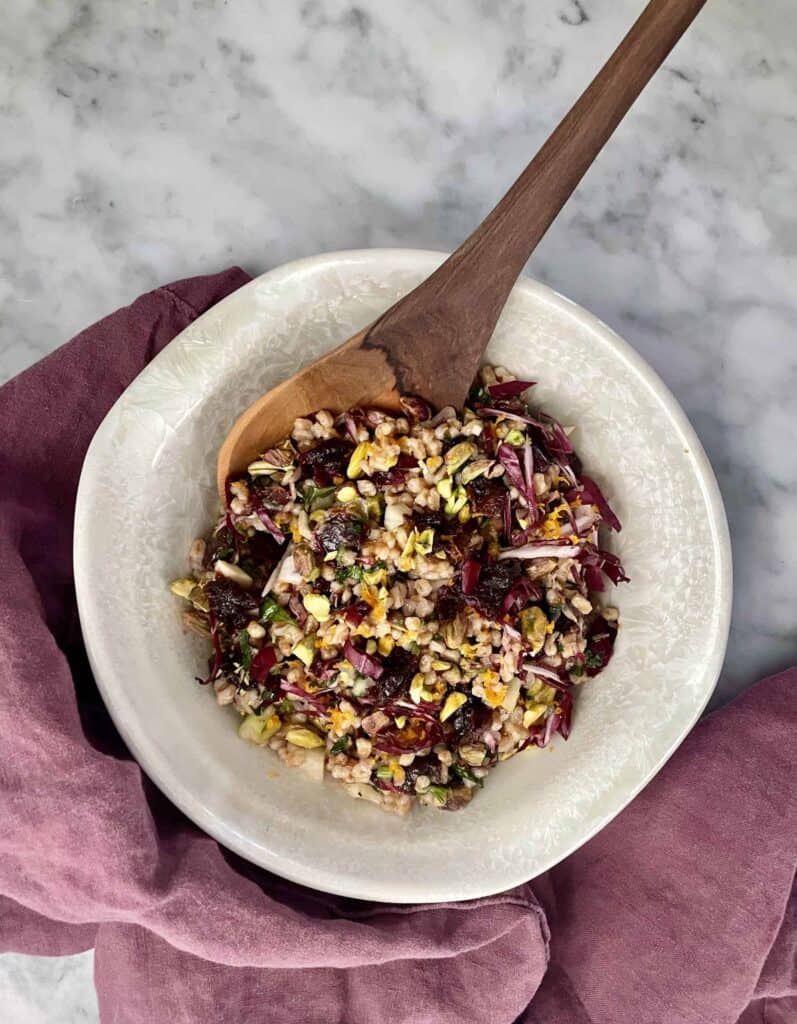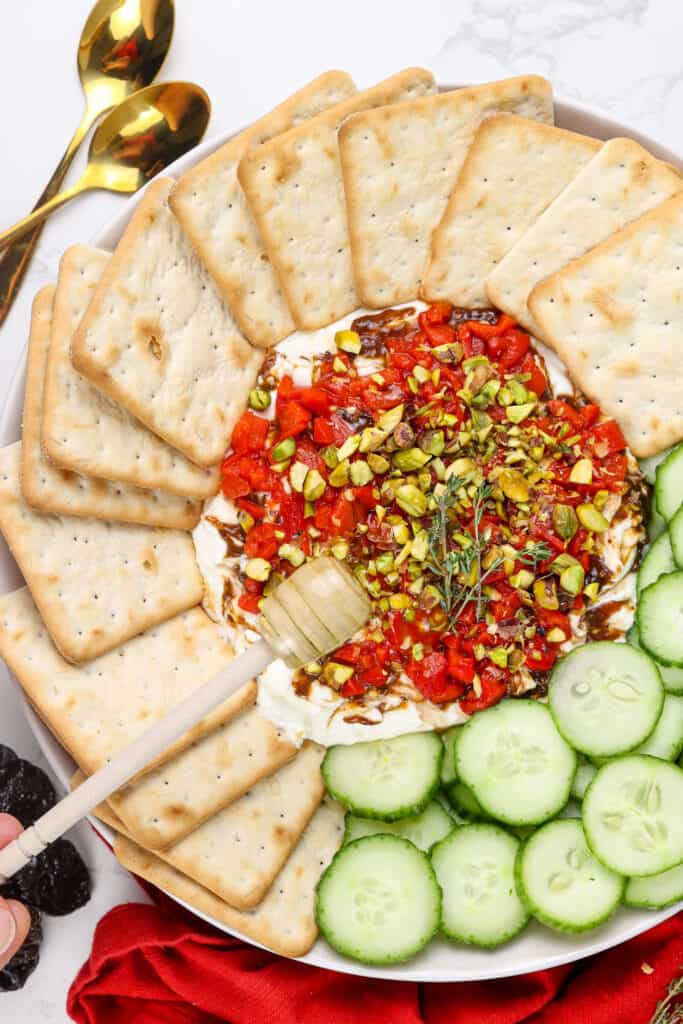
The #1 Food to Prevent Bone Loss
We’ve come a long way as a society embracing getting older. Gone are the days tears are shed on your 50th birthday, and instead, welcomed parties are thrown to celebrate this milestone.
Healthy living is finally healthy aging. And, by focusing on making health a cornerstone of your values from a young age, you will see the benefits pay off for years to come. Case in point, bone health.
It may seem like fueling bone health is only important when you’re young since that’s when you can physically see growth occur, but that’s not the case at all. Your bones are actually living tissue. This means that they’re in a constant state of turnover, shedding older tissue and building stronger, new tissue to support your evolving needs as you age.
However, when bone health is not nurtured through a healthy lifestyle (including both food and exercise), bone loss can occur. In the United States, it’s estimated that over 10 million adults have osteoporosis (a disease marked by bone loss and reduced bone strength that can lead to increased risk of fractures), while 40 million more adults have low bone mass.1 Given these alarming statistics, I want to equip you with the tangible things you can start doing today, regardless of your age, to promote bone health for the long haul. In this article, I will share with you why bone health is important and what the #1 food dietitians like me recommend adding to your diet to support your bone health.
Why Supporting Bone Health Is Important
Nearly 20% of your body weight is your bone mass, also known as bone density, which is essentially the weight of calcium and other minerals that make up your bones.2,3 When you have “denser bones”, your bone mass will weigh more.3 But, this extra weight isn’t a bad thing. In fact, it means you have stronger, sturdier bones that are less likely to fracture. Before you turn 18, your bones are breaking down and forming new tissue at an equal rate. In fact, peak bone mass is reached between 18 and 25 years of age, meaning the denser your bones are at this time, the less likely you are to develop osteoporosis or break a bone as you age.4
However, when we enter our mid-30s, the shedding of older bone continues, but the rate at which new bone tissue forms is much slower, resulting in bone loss. Unless you proactively support your bone health through positive diet and lifestyle habits, bone mass will start to decrease with age, increasing your risk of bone fractures. And, I’m sorry ladies, but females tend to lose bone mass at a greater rate than men, especially as one nears menopause.
Thankfully, you don’t have to stress. There’s a food you can start adding to your diet, today, that may help improve your bone health well into the future. I’m sharing that food below.
The #1 Food for Bone Health
Surprise, it’s California Prunes!
Contrary to what you may have thought, prunes aren’t just the fruit you use to support digestive health. Prunes are a treasure trove of nutrition that science continues to explore because they’ve got that much to offer. In fact, research shows that prunes are beneficial for not only gut health and bone health, but also may benefit cardiovascular health, weight management, and healthy aging and cognition.
What’s in this superhero fruit you may be wondering that gives it such a nutritional bang per bite? Let’s find out.
Nutrition Facts & Serving Size of Prunes
Tiny but mighty, in roughly four to six prunes, a standard serving, you’re giving your body a delightful blend of nutrients. For instance, approximately 38 grams of prunes (or a ¼ cup serving) contains the following:

Calories: 90
Total Fat: 0 g
Cholesterol: 0 g
Sodium: 0 g
Total Carbohydrates: 24 g
Dietary Fiber: 3 g / 11% daily value
Total Sugars: 14 g
Added Sugars: 0 g
Protein: 1 g
Vitamin D: 0
Calcium: 20 mg / 2% daily value
Iron: 0.4 mg / 2% daily value
Potassium: 280 mg / 6% daily value
But that’s not all. Prunes are also an excellent source of vitamin K (an important nutrient to maintain healthy bones), a good source of copper (an important mineral needed to build connective tissue), and contain polyphenols (antioxidants), vitamin B6 (an energy vitamin) and boron (a trace element).5,6,7
Scientists are exploring how this particular group of nutrients in prunes, including fiber, copper, iron, vitamin B6, polyphenols and boron may work together to benefit bone health. And, they have some good news! Prunes are a one-size-fits-all food that you can incorporate at any age and life stage to see their bone health benefits.

Why Prunes Are THE Functional Food For Better Bone Health
You may have heard “food is medicine” and there is truth to that, especially when you look at the decades of research that have explored the positive effects prunes have on total bone health. For instance, a review published in Nutrients looked at the studies involving prunes and bone health published before 2017.8 Researchers found that of the 24 studies used in the analysis, including prunes in the diet is a great way to meet fruit intake recommendations and may decrease bone loss in postmenopausal women (but more research is needed with diverse populations.)
But, why is this the case?
Scientists agree that prunes’ unique blend of nutrients and bioactive compounds work together to minimize bone turnover.9 Essentially, these nutrients influence the cellular pathways that result in increased bone breakdown and instead offer protection to inhibit bone loss.
Research has supported this idea, with a recent 2022 randomized control trial published in the American Journal of Clinical Nutrition, known as the Prune Study, confirming this.10 Researchers found that the nutrient package of prunes, with 50 grams of daily prune consumption over a six month period, prevented loss of hip bone mineral density in postmenopausal women.10 With over 300,000 hip-fracture related hospitalizations each year in the United States related to older adult falls, it’s important to take proactive means now to protect your health for years to come.11
Let’s explore why the two rising stars found in prunes, polyphenols and boron, may play a role too.
Powerful Polyphenols
That beautiful dark purple hue that gives prunes its signature color is due to their polyphenol content. Mainly, anthocyanins, flavonoids and resveratrol are the three polyphenols found in the dark purple/blue fruits and vegetables, like California Prunes. These polyphenols are types of antioxidants, which means their function is to go into your body and help capture free radicals (or disruptors of health) and kick them out of your body.
With the intricate system involved within the body breaking down and building new bone, inflammation may build up whether we like it or not, affecting bone health. Researchers have found that polyphenols, like those found in prunes, may positively affect bone turnover.12 While the exact mechanism is still being explored, the thought is that the nutrient composition of prunes, with their fiber content, polyphenols, vitamin K and other nutrients, act together on inflammatory pathways, decreasing oxidative stress and improving bone health.13
A recent 2024 secondary study was conducted on the data from the original Prune Study to explore this anti-inflammatory connection further and found more promising results in favor of prunes polyphenols and their effects on bone health. Through daily consumption of 50 to 100 grams of prunes, postmenopausal women experienced a greater reduction in circulating levels of proinflammatory markers. When these markers are in your body, they interfere with bone signaling pathways, increasing bone loss. Suppressing these markers through dietary inclusion of prunes may potentially support your bone health.14
Sure, health professionals always recommend more research, but the good news is adding a handful of prunes to your daily routine can’t hurt, especially when you consider their polyphenol punch.
Boron Bone Benefits
Next up, boron. Boron is a trace element that is found in many foods, like prunes, and provides structure to plants. While research is still unfolding surrounding this mineral, what we do know is it may play a role in many bodily functions, including bone formation and steroid hormone function.7,15 Remember, estrogen and testosterone changes can impact bone health in both females and males as we age, making supportive nutrients like boron potentially even more beneficial.
A recent 2020 paper published in the Journal of Trace Elements in Medicine and Biology reviewed 11 available studies on boron supplementation and bone health. Findings concluded that a 3-gram supplement of boron, be it alone, or when combined with other nutrients, positively supported bone mineral density.16
While there is no dietary reference intake provided for boron due to insufficient data at this time, the World Health Organization (WHO) lists an acceptable safe intake in the range of 1 to 13 milligrams per day for adults.7 A serving of prunes provides this, coming in at roughly 2 to 3 milligrams.17
Considering the complete nutrient package prunes offers alongside boron with other bone health nutrients, like vitamin K, calcium and those polyphenols, you’re going to want to add them to your menu plan, fast. Don’t worry, we’ve got some tips on how to do so too!


Tips to Incorporate Prunes In Your Diet
Prunes are arguably one of the most versatile fruits to use in recipes. Not only do they pair wonderfully as a natural sweetener in your baked goods, but they also enhance savory dishes, yielding a complex, out-of-this-world flavor profile that chefs around the globe utilize. And, regardless of whether you’re a seasoned cook or not, can certainly take the lead and add them in some of your own creations as well.
Plus, prunes are also fat-free, cholesterol-free, sodium-free and free of added sugars. This makes them a go-to in the nutrition world to add a big bite of nutrition in whatever you’re serving up. Whether you’re new to adding prunes to your diet or just need some new ways to try them, here are a few fan favorites we think you’ll enjoy too.

Puree prunes to use in recipes. Prune puree is so versatile. Plus, it makes an excellent swap in desserts to lower the added sugar content while boosting the nutrient content of a typically low nutritive item. Follow this recipe to make your own and use it in a classic Chocolate Chip Cookie recipe or a zesty Balsamic Dressing.
Chop prunes for an easy add to dishes. Looking to elevate your salads or grain bowls with new texture and flavor? Then a handful of chopped prunes and pistachios make a great addition. Try them in our Farro Bowl with your favorite nuts or seeds.
Use them on your charcuterie boards. Enjoying some time with friends? Then boost the nutrition of your boards with a handful of the vibrant prunes. They pair great alongside pecans, sliced apples, and other fruits, as well as your favorite cured meats and cheeses, like goat, aged Gouda, and Manchego. Or, whipped into feta for a fun, festive dip.
- Enjoy them on their own as a portable snack alongside protein and fat. Prunes are great on their own, but to offer more staying power with your snack, pair them with a partner like walnuts or almonds. These nuts provide a healthy dose of fat and a bit of protein to help tide you over until your next meal.
- Spice up your beverages with prune juice. 100% prune juice is a welcomed addition to your kitchen that provides those same health promoting benefits you’ve come to know and love from prunes, but just in a liquid form. It works wonderful in smoothies, like this Tropical Prune Juice Smoothie, cocktails and mocktails, and even as a liquid in marinades, dressings, and when poaching fruits.
What This Means For You
You’re never too old (or too young) to start supporting your bone health. One of the easiest, nutrient-dense, cost-effective ways to do so is to add prunes into your regular routine. Start by adding a few pitted prunes into your smoothies, sprinkle a handful of chopped prunes onto your salads, or simply enjoy them on their own for a portable snack.

About Liz Shaw
Liz is a registered dietitian known for her expertise in nutrition and wellness. With a passion for helping individuals achieve their health goals through practical and sustainable dietary changes, Liz combines evidence-based nutrition science with personalized coaching. She is also an accomplished author, speaker, and media contributor, frequently sharing her insights on healthy eating, meal planning, and the benefits of a balanced diet. Liz’s approachable style and dedication make her a trusted resource in the field of dietetics.
Sources:
1.U.S. Department of Health and Human Services. Office of Disease Prevention and Health Promotion. Osteoporosis Workgroup. Accessed on 7/10/24. https://health.gov/healthypeople/about/workgroups/osteoporosis-workgroup#:~:text=In%20the%20United%20States%2C%20an,at%20increased%20risk%20for%20osteoporosis.
2. National Institute of Health. National Cancer Institute. Introduction to the Skeletal System. Accessed on July 10, 2024. https://training.seer.cancer.gov/anatomy/skeletal/.
3. National Library of Medicine. Medline Plus. Bone Density. Accessed on July 10, 2024. https://medlineplus.gov/bonedensity.html.
4. Bone Health & Osteoporosis Foundation. Bone Basics. Accessed on July 10, 2024. https://www.bonehealthandosteoporosis.org/preventingfractures/general-facts/bone-basics/.
5. National Institute of Health. Office of Dietary Supplements. Vitamin K. Accessed on July 10, 2024. https://ods.od.nih.gov/factsheets/VitaminK-Consumer/.
6. National Institute of Health. Office of Dietary Supplements. Copper. Accessed on July 10, 2024. https://ods.od.nih.gov/factsheets/Copper-Consumer/.
7. National Institute of Health. Office of Dietary Supplements. Boron. Accessed on July 10, 2024. https://ods.od.nih.gov/factsheets/Boron-HealthProfessional/.
8. Wallace TC. Dried plums, prunes and bone health: a comprehensive review. Nutrients. 2017;9(4):401. Published 2017 Apr 19. doi:10.3390/nu9040401
Ji MX, Yu Q. Primary osteoporosis in postmenopausal women. Chronic Dis Transl Med. 2015 Mar 21;1(1):9-13.
9. Hooshmand S, Chai SC, Saadat RL, Payton ME, Brummel-Smith K, Arjmandi BH. Comparative effects of dried plum and dried apple on bone in postmenopausal women. Br J Nutr. 2011;106(6):923-930. doi:10.1017/S000711451100119X
10. De Souza MJ, Strock NCA, Williams NI, et al. Prunes preserve hip bone mineral density in a 12-month randomized controlled trial in postmenopausal women: the Prune Study. Am J Clin Nutr. 2022;116(4):897-910. doi:10.1093/ajcn/nqac189
11. Moreland B, Legha J, Thomas K, Burns ER. Hip fracture-related emergency department visits, hospitalizations, and deaths by mechanism of injury among adults aged 65 and older, United States 2019. Journal of Aging and Health. 2023 Jun;35(5–6):345–355. DOI: 10.1177/08982643221132450.
12. Austermann K, Baecker N, Stehle P, Heer M. Putative effects of nutritive polyphenols on bone metabolism in vivo-evidence from human studies. Nutrients. 2019;11(4):871. Published 2019 Apr 18. doi:10.3390/nu11040871
13. Damani JJ, De Souza MJ, VanEvery HL, Strock NCA, Rogers CJ. The role of prunes in modulating inflammatory pathways to improve bone health in postmenopausal women. Adv Nutr. 2022;13(5):1476-1492. doi:10.1093/advances/nmab162
14. Damani JJ, Oh ES, De Souza MJ, et al. Prune consumption attenuates proinflammatory cytokine secretion and alters monocyte activation in postmenopausal women: secondary outcome analysis of a 12-mo randomized controlled trial: the prune study. J Nutr. 2023;S0022-3166(23)72732-6. doi: 10.1016/j.tjnut.2023.11.014. Epub ahead of print.
15. Pizzorno L. Nothing boring about boron. Integr Med (Encinitas). 2015 Aug;14(4):35-48.
16. Rondanelli M, Faliva MA, Peroni G, et al. Pivotal role of boron supplementation on bone health: A narrative review. J Trace Elem Med Biol. 2020;62:126577. doi:10.1016/j.jtemb.2020.126577
17. Stacewicz-Sapuntzakis M, Bowen PE, Hussain EA, Damayanti-Wood BI, Farnsworth NR. Chemical composition and potential health effects of prunes: a functional food?. Crit Rev Food Sci Nutr. 2001;41(4):251-286. doi:10.1080/20014091091814